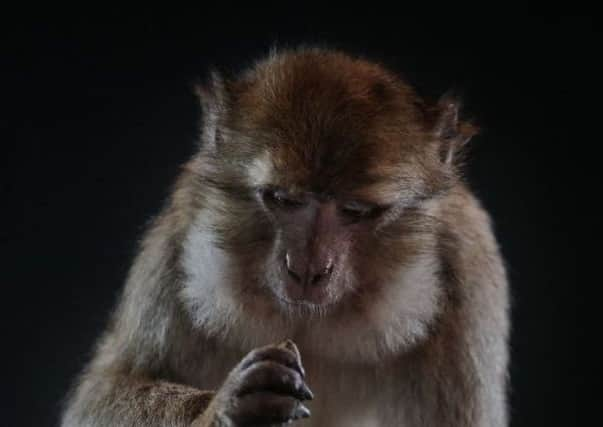Monkey that fled Edinburgh Zoo to be stuffed at National Museum


Yousef the Barbary macaque had to be shot with tranquilliser darts after making a bid for freedom following an argument with an older monkey in November 2009 – and ending up on a hotel roof a mile away.
The four-year-old monkey broke out from his cage and scaled an electric fence before swinging from trees and lampposts to escape zookeepers.
Advertisement
Hide AdAdvertisement
Hide AdHe will now go back on show as a highlight of the Monkey Business exhibition, which opens on Friday at the National Museum.
More than 50 “spectacular new taxidermy specimens” of monkeys, apes, lemurs, lorises and bush-babies from collections around Europe will be revealed in the show, which organisers describe as the “most comprehensive exhibition on primates ever”.
Dr Andrew Kitchener, principal curator, said: “We have one animal from Edinburgh Zoo, a Barbary Macaque called Yousef.
“We’ve mounted him stuffing his cheek pouches with acorns which were sent to us from Morocco – so they are genuine Barbary macaque diet.
Advertisement
Hide AdAdvertisement
Hide Ad“In his life he never tasted his natural diet, so we are showing him a bit in the museum.”
Yousef escaped from Edinburgh Zoo’s Barbary Rock enclosure twice in 2009. The animal, which originally came from a collection in Germany, went on the run for two weeks in July that year.
He and four other agile macaques climbed a wall and crept under an electric fence before escaping to the surrounding trees – only to slip up when he wandered in to the baboon house and was cornered.
Undeterred by improvements to the enclosure, in November, following a dispute with a rival, Yousef scaled the electric fence and escaped from the zoo.
Advertisement
Hide AdAdvertisement
Hide AdNegotiating heavy traffic by swinging from lamppost to lamppost, he was found three days later on the roof of the Capital Hotel in Clermiston, where he was brought down with tranquilliser darts and taken home. He died in 2010.
Dr Kitchener added: “We don’t tell the story of the individual primates – they are representing their species – but it’s good for Yousef that he has been immortalised. His was a great story.”
The largest primate in the exhibition, a western Iowland gorilla, weighs more than 3000 times the smallest, a tiny mouse lemur.
Dr Kitchener said: “Monkey Business is a once-in-a-lifetime exhibition and the first of its kind worldwide.
Advertisement
Hide AdAdvertisement
Hide Ad“Taxidermy done badly is kind of creepy and awful, but what we’re trying to do is preserve the very best taxidermy you can get anywhere. When people have seen the quality of what we have produced, it has really captured their imagination.
“What we are trying to do is show animals doing particular behaviours. They are not just standing there looking bored but doing something interesting.
“We are showing the huge diversity of primates from around the world and actually explaining how they are all our relatives however close or distant they might be.”
Monkey Business runs at the National Museum of Scotland from Friday until April 23.